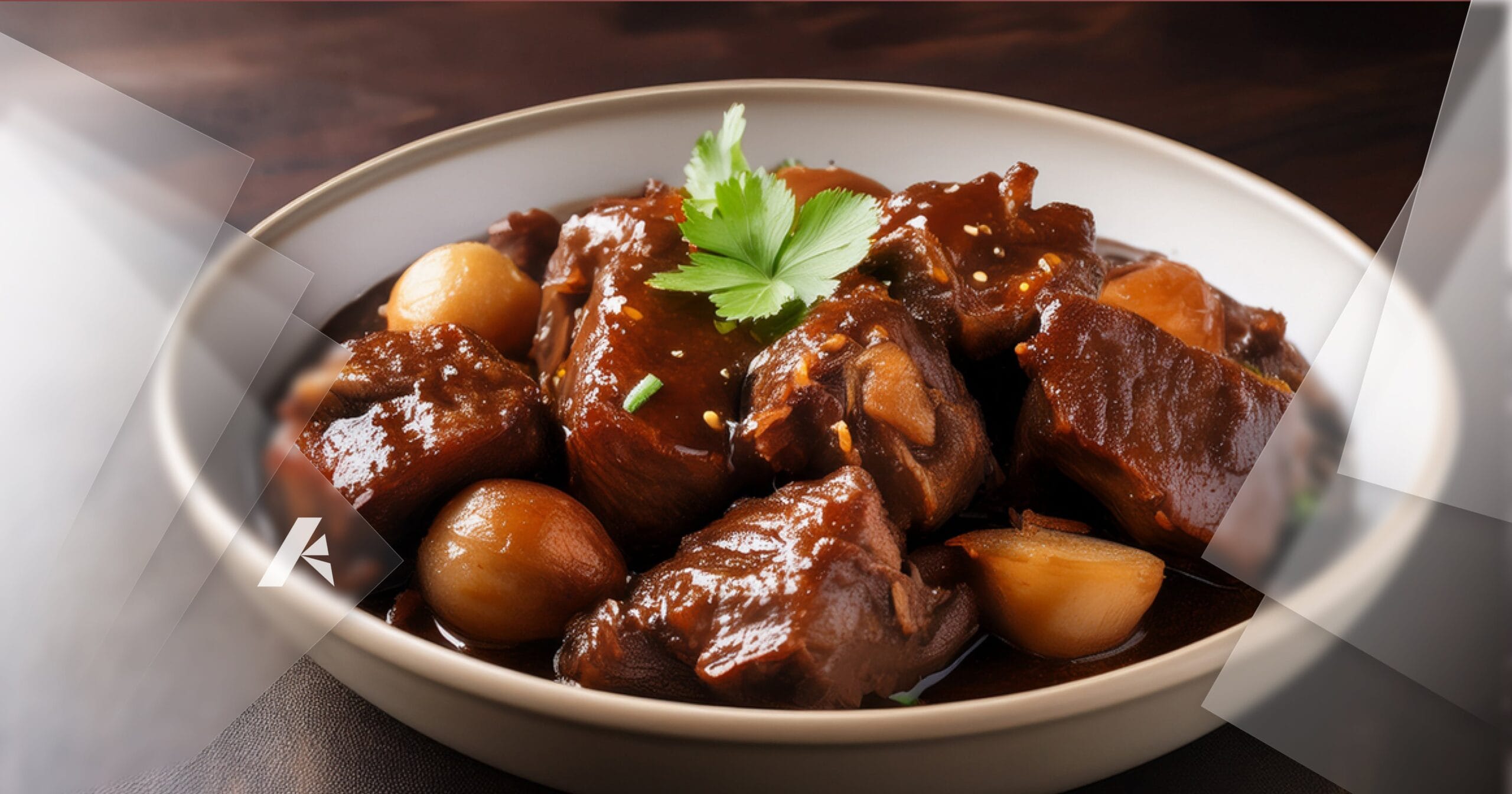Introduction: Adobo as Identity
If there is one dish that can claim the heart of the Filipino table, it is Adobo. More than just a savory stew of meat braised in vinegar, soy sauce, and garlic, Philippine Adobo is a living, simmering testament to Filipino culture, history, adaptability, and soul. It crosses class lines, regional boundaries, and even migrates across oceans—transforming yet preserving its essence.
In this long-form article, we will explore:
- The pre-colonial roots of adobo
- How Spanish colonization gave it its name
- Regional and cultural variations
- Its rise as a national symbol
- The global face of adobo in the Filipino diaspora
- Contemporary reinterpretations and culinary relevance
Chapter 1: The Origins — Adobo Before It Was Called Adobo
Pre-Hispanic Cooking Techniques
Long before the term “adobo” ever reached the islands, early Filipinos were already cooking meat using methods of preservation and flavor enhancement. These included:
- Boiling meat in vinegar and salt, a method that not only tenderized meat but also extended its shelf life in the tropical climate.
- Use of garlic, native herbs, and local spices to add flavor and repel bacteria.
- Drying and smoking as complementary techniques to prevent spoilage.
The early form of adobo was more method than recipe. It was, in essence, a utilitarian dish — designed for preservation, made from readily available ingredients, and evolving in every home depending on what was around.
Pre-colonial Ingredients
- Vinegar: Made from nipa palm, coconut, sugarcane, or rice.
- Salt: Harvested from sea or traded.
- Garlic and ginger: Local aromatics used for depth.
- Protein: Mainly pork, chicken, or fish.
No soy sauce yet. No Spanish influence. But this proto-adobo was already simmering in clay pots across the islands — a culinary tradition born out of necessity and resourcefulness.
Chapter 2: Spanish Colonization and the Name “Adobo”
The Etymology of Adobo
The Spanish arrived in 1521 and colonized the archipelago for over three centuries. When the colonizers observed how the locals cooked meat in vinegar and garlic, it reminded them of a Spanish method called “adobar,” meaning “to marinate” or “to season.”
Thus, what the natives were already doing was given the label “adobo” — not as a new dish, but as a colonial categorization of something inherently Filipino.
Spanish Adobo vs. Filipino Adobo
- Spanish Adobo is typically a red marinade made with vinegar, paprika, olive oil, and oregano.
- Filipino Adobo, in contrast, uses soy sauce (later introduced), bay leaf, and sometimes sugar. It is not a marinade alone, but a cooking process — simmering meats low and slow in acid, salt, and aromatics.
New Ingredients Introduced
- Soy sauce: Brought by Chinese traders and incorporated into many Filipino dishes.
- Bay leaves: Introduced through Spanish trade.
- Black peppercorns: Added for warmth and spice.
- Sugar: Used in some regional versions for balance.
This fusion of pre-colonial technique with foreign ingredients led to what we now know as Filipino Adobo — not a singular dish, but a whole category of dishes.
Chapter 3: Adobo Across the Archipelago — A Dish of Many Islands
There is no one version of adobo. Across the 7,000+ islands of the Philippines, it has evolved based on:
- Geography
- Available ingredients
- Local taste preferences
- Religious or cultural restrictions
Regional Variations
1. Adobong Puti (White Adobo)
- Found in parts of Visayas and Central Luzon.
- No soy sauce. Only vinegar, salt, and garlic — closer to the original pre-colonial method.
2. Adobo sa Gata
- Common in Bicol and southern Luzon.
- Adds coconut milk (gata) for a creamy, spicy twist.
- Often spiced with sili for heat.
3. Adobong Tuyo
- Dry-style adobo with less sauce.
- Often cooked longer until the oil separates.
- Excellent for longer storage and baon.
4. Adobo sa Dilaw
- From Batangas and Laguna.
- Uses turmeric (dilaw) for a yellow tint and earthy flavor.
5. Adobong Pusit
- Made with squid, ink included.
- Dark, rich, and seafood-forward.
6. Adobong Kangkong / Tofu / Sitaw
- Vegetarian adobo options using native vegetables or tofu.
7. Muslim Variants
- In Muslim Mindanao, pork is not used.
- Chicken or beef adobo may feature additional spices like curry or cinnamon.
Adobo, in all its regional glory, represents the plurality of Filipino identity — diverse yet connected.
Chapter 4: Adobo in the Filipino Household
A Daily Staple
- Adobo is not just a fiesta food, it’s everyday fare.
- Cooks love it because it’s easy, adaptable, and tastes better the next day.
- It is often cooked in batches and can last for days without refrigeration.
Every Family Has a Recipe
Ask ten Filipino households how they cook adobo and you’ll get ten different answers. Some like it:
- Sweet (with sugar or pineapple)
- Spicy (with siling labuyo)
- Sour (with more vinegar)
- Dry or saucy
- With hard-boiled eggs or potatoes
It is not a recipe but a canvas — a dish that welcomes personalization.
Chapter 5: Adobo and National Identity
Is Adobo the National Dish?
There has long been debate about declaring Adobo as the Philippine national dish. While no law has officially declared it so, it remains the most iconic in the Filipino psyche.
Reasons include:
- Its historical roots.
- Its ubiquity in households and celebrations.
- Its flexibility to accommodate any class or region.
- Its recognizability abroad.
In 2021, the Department of Trade and Industry (DTI) attempted to standardize adobo to promote it globally. This sparked public backlash. Filipinos insisted that its charm lies in its variations, and to define it narrowly would betray its spirit.
A Symbol of Filipino Resilience
- Adobo persisted during wartime, cooked in scarcity and hardship.
- It thrives in fiestas and funeral wakes alike.
- It has nourished generations, rich or poor.
In every simmered pot of adobo is the story of survival, adaptation, and soul.
Chapter 6: Adobo in the Global Filipino Table
The Overseas Filipino Worker (OFW) Connection
With millions of Filipinos working abroad, adobo is a portable memory. It’s often the:
- First dish cooked in a foreign kitchen.
- Comfort food after a long day’s work.
- Cultural ambassador during international food fairs or potlucks.
Global Recognition
- Featured in shows like Anthony Bourdain’s “Parts Unknown” and Netflix’s “Street Food: Asia”.
- Written about in The New York Times, BBC, and Bon Appétit.
- Listed as one of the world’s most flavorful comfort foods.
Filipino Restaurants Abroad
Restaurateurs abroad have reimagined adobo as:
- Adobo sliders
- Adobo pasta
- Adobo ramen
- Gourmet adobo bowls
These innovations help introduce Filipino flavors to the world — while preserving their authenticity.
Chapter 7: Adobo in Contemporary Filipino Cuisine
Modern Takes by Filipino Chefs
Contemporary Filipino chefs are giving adobo a new life. Not to change it — but to elevate and reinterpret:
- Claude Tayag explores regional adobo nuances.
- Margarita Fores incorporates adobo in fine dining.
- JP Anglo reinvents adobo for millennials.
Adobo in Pop Culture
- Referenced in songs, films, literature.
- Appears in Filipino-American memoirs as a nostalgic centerpiece.
- A common metaphor for identity: complex, balanced, and bold.
Chapter 8: The Recipe That Unites Us All
There may never be a singular definition of adobo — and that’s precisely what makes it quintessentially Filipino.
Adobo is:
- A story told in steam and sauce.
- A taste of childhood and heritage.
- A culinary language spoken from Batanes to Tawi-Tawi.
It’s in our baon boxes, airport goodbyes, OFW tupperware, celebrations, and grief.
Conclusion: Adobo as the Soul of the Filipino Table
The history of Philippine Adobo is a history of the Filipino people themselves — adaptable, resilient, diverse, and deeply flavorful.
From the humble clay pots of ancient Filipinos to the fusion tables of Michelin-starred restaurants abroad, adobo has walked with us, grown with us, and fed our families for generations.
To understand adobo is to understand the story of a nation told through food — rich in history, bursting with identity, and forever simmering on the stove of memory.





